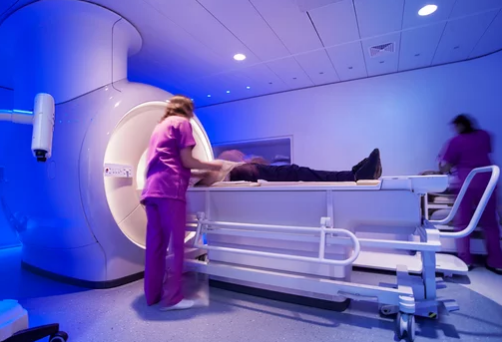Early and accurate cancer diagnosis is critical for effective treatment and improved survival. Among the advanced imaging tools available, Magnetic Resonance Imaging (MRI) stands out for its ability to provide highly detailed, radiation-free images of soft tissues, making it invaluable in detecting and monitoring various cancers. However, access to MRI remains a major challenge in many developing countries, affecting timely diagnosis and treatment outcomes.
This article examines the barriers to MRI access, its importance in cancer care, and potential solutions for expanding availability in resource-limited settings.
The Importance of MRI in Cancer Diagnosis
MRI is a key diagnostic tool for:
- Detecting tumors in the brain, liver, prostate, breast, and other soft tissues.
- Guiding biopsies to ensure accurate tissue sampling.
- Planning radiation therapy by precisely mapping tumor boundaries and surrounding organs.
- Monitoring treatment response during chemotherapy, surgery, or radiation therapy.
Unlike CT scans or X-rays, MRI does not use ionizing radiation, making it safer for repeated imaging, which is especially important in long-term cancer monitoring. Its high-resolution images help oncologists make informed decisions, improve treatment accuracy, and reduce unnecessary interventions.
Barriers to MRI Access in Developing Countries
Despite its benefits, MRI availability is limited in many low- and middle-income countries due to several challenges:
1. High Cost of Equipment
MRI machines are expensive to purchase and maintain. High-field MRI units can cost hundreds of thousands of dollars, while maintenance and repair require specialized technicians.
2. Limited Infrastructure
MRI machines need stable electricity, climate-controlled rooms, and shielding to operate safely. Many hospitals in developing countries lack these essential facilities.
3. Shortage of Trained Personnel
Operating MRI machines and interpreting scans requires skilled radiologists and technologists. A lack of trained professionals leads to underutilization of available machines.
4. Geographic Barriers
Patients in rural areas often travel long distances to reach hospitals with MRI facilities, delaying diagnosis and treatment.
5. Cost to Patients
Even where MRI is available, high out-of-pocket costs can make scans unaffordable for many patients, limiting access to timely care.
Impact of Limited MRI Access on Cancer Outcomes
Limited access to MRI contributes to:
- Delayed diagnosis: Late detection often results in advanced-stage cancers that are harder to treat.
- Inaccurate staging: Without precise imaging, tumors may be under- or overestimated, affecting treatment decisions.
- Reduced treatment effectiveness: Radiation and surgical planning may be less precise, increasing complications and side effects.
- Inequities in care: Urban patients often have better access than those in rural or underserved areas, widening healthcare disparities.
Innovative Solutions to Improve MRI Access
1. Portable and Low-Field MRI Machines
Portable MRI units are smaller, cheaper, and require less infrastructure. They can be deployed in rural clinics or smaller hospitals, bringing advanced imaging closer to patients.
2. Public-Private Partnerships
Collaborations between governments, NGOs, and private companies can fund MRI equipment, training programs, and maintenance in resource-limited hospitals.
3. Tele-Radiology and AI Assistance
Tele-radiology allows scans to be interpreted remotely by radiologists in other regions or countries. AI-powered MRI analysis can assist local clinicians in detecting tumors, reducing dependency on in-person expertise.
4. Training and Capacity Building
Investing in the education of radiologists, technologists, and biomedical engineers ensures that MRI machines are used effectively and maintained properly.
5. Subsidies and Insurance Programs
Government or NGO-funded programs can reduce the cost of MRI scans for patients, increasing accessibility and encouraging early diagnosis.
Examples of Progress
- Portable MRI in rural clinics: Some African and Asian countries have started piloting low-field, portable MRI machines, enabling bedside cancer imaging.
- AI-assisted diagnostics: Remote hospitals are using AI platforms to interpret MRI scans, improving early detection rates.
- International partnerships: Programs funded by WHO, NGOs, and private companies have introduced MRI units to underserved hospitals, accompanied by staff training initiatives.
The Future of MRI in Developing Countries
Emerging technologies and strategies offer hope for improving cancer care:
- Affordable high-resolution MRI: Research is underway to produce lower-cost machines with imaging quality approaching high-field MRI.
- Integrated mobile imaging units: Combining portable MRI with CT or ultrasound in mobile clinics can deliver comprehensive diagnostics to rural populations.
- AI-powered triage: AI algorithms can prioritize urgent cases, ensuring timely diagnosis even with limited radiology staff.
- Global training networks: Online training platforms and virtual mentorship can expand the workforce capable of using MRI effectively.
Conclusion
MRI is a powerful tool for cancer diagnosis, treatment planning, and monitoring, but access remains limited in many developing countries. High costs, infrastructure challenges, and a shortage of trained professionals create barriers that delay diagnosis and affect outcomes.
Innovative solutions such as portable MRI, AI-assisted imaging, tele-radiology, and public-private partnerships offer a pathway to bridge this gap. Expanding access to MRI is not just a technological challenge—it is a critical step toward equitable cancer care, early detection, and improved survival for patients worldwide.
Also Read :
